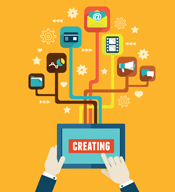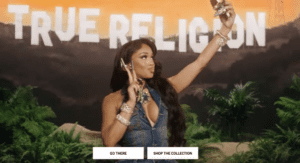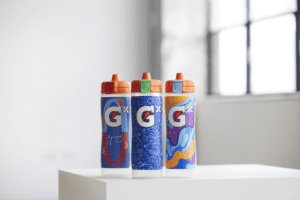When do you start measuring engagement? The short answer – once the content is live and is collecting views, comments and other platform data. From my experience with co-creation and crowdsourcing, however, I’ve learned that people build a personal connection to the brand by creating content.
Why We Flipped Our Switch to Crowdsourcing
 I’ve been following the crowdsourcing tactic as it’s evolved over the past decade, but when creative crowdsourcing came onto the scene it really became interesting to building a brand. We’ve found creative crowdsourcing a particularly effective way to reach young consumers. These are Millennials who don’t want to be spoken to via traditional advertising; they want to engage in a dialogue about what the brand believes. Crowdsourcing allows brands to build this type of transparent relationship by working with thousands of people who are invested in contributing their ideas and having their voice heard.
I’ve been following the crowdsourcing tactic as it’s evolved over the past decade, but when creative crowdsourcing came onto the scene it really became interesting to building a brand. We’ve found creative crowdsourcing a particularly effective way to reach young consumers. These are Millennials who don’t want to be spoken to via traditional advertising; they want to engage in a dialogue about what the brand believes. Crowdsourcing allows brands to build this type of transparent relationship by working with thousands of people who are invested in contributing their ideas and having their voice heard.
This two-way dialogue benefits creators and marketers: The creator has an active role in shaping a brand he/she cares about, and marketers get much more than content purely created as part of a campaign. By working with designers, writers, photographers and filmmakers on crowdsourcing platforms—who tend to be young and often global—marketers increase the likelihood that these creators will become customers and influence people within their own networks to consider the brand as well.
Keep in mind any project brief on a crowdsource platform like Tongal can get hundreds of responses. And in order to respond, people learn about your brand and product. That’s a lot of people getting to know your brand in a very engaged, rich and personal way—before you ever release your first piece of content.
Take a Relationship-First Approach to Influencers
Crowdsourcing lets you build real, personal connections otherwise unachievable with agency content creation. This past year I worked with Ivan, a young YouTuber popular in Russia (who goes by the alias EEOneGuy). Ivan’s excitement about the content he created for the brand permeated the entire content experience. Not only is his video, an excellent piece of content, but his enthusiasm throughout the process made the campaign a success. He engaged his fans with calls to action, and they responded in record numbers, helping boost traffic to the campaign site by 9%. For everyone watching online, the creative process drew them in to engage.
Ivan demonstrates why brands work with influencers. Brands value the close, authentic relationships these influencers have built with their followers, and the influencer’s whole creative process becomes an opportunity to generate interest and conversation about the project. Remember to collect behind-the-scenes content from creators—it’s just as important as the final asset because it takes fans on the making-of journey and deepens the entire experience.
A Bonus: Creating Content Transforms into Experiential Marketing
There’s something magical that happens when creating the content actually becomes the experiential marketing process itself. The people engaged by the brand are providing new insights and unexpected perspectives, challenging traditional marketers to see their products and messaging from unanticipated angles. And when the process goes well, the fresh ideas and new talent can inspire meaningful change in how a brand goes-to-market. We see our work with co-creators reflected in our brand architecture, with fixed and fluid elements that let us keep brand consistency while still allowing a wide range of creative expression. Tone of voice, visual identity markers, and a customizable logo are part of what make up these elements. Every new creator has a different, unexpected take on how to use these elements.
As a marketer, it’s deeply satisfying to share the ongoing process of expressing your brand. It gives us another way to share the brand, beyond the products that we make, with meaningful and genuine involvement from people who bring their unique points of view to what we say in the market and how we say it.
Maureen Ahmad is director, brand strategy and content, Lenovo—@maureenahmad
Related articles:
3 Content Experience Elements to Drive Business Goals
Forgot Something? Perhaps it’s the No. 1 Step for Content Marketing




 Network
Network

